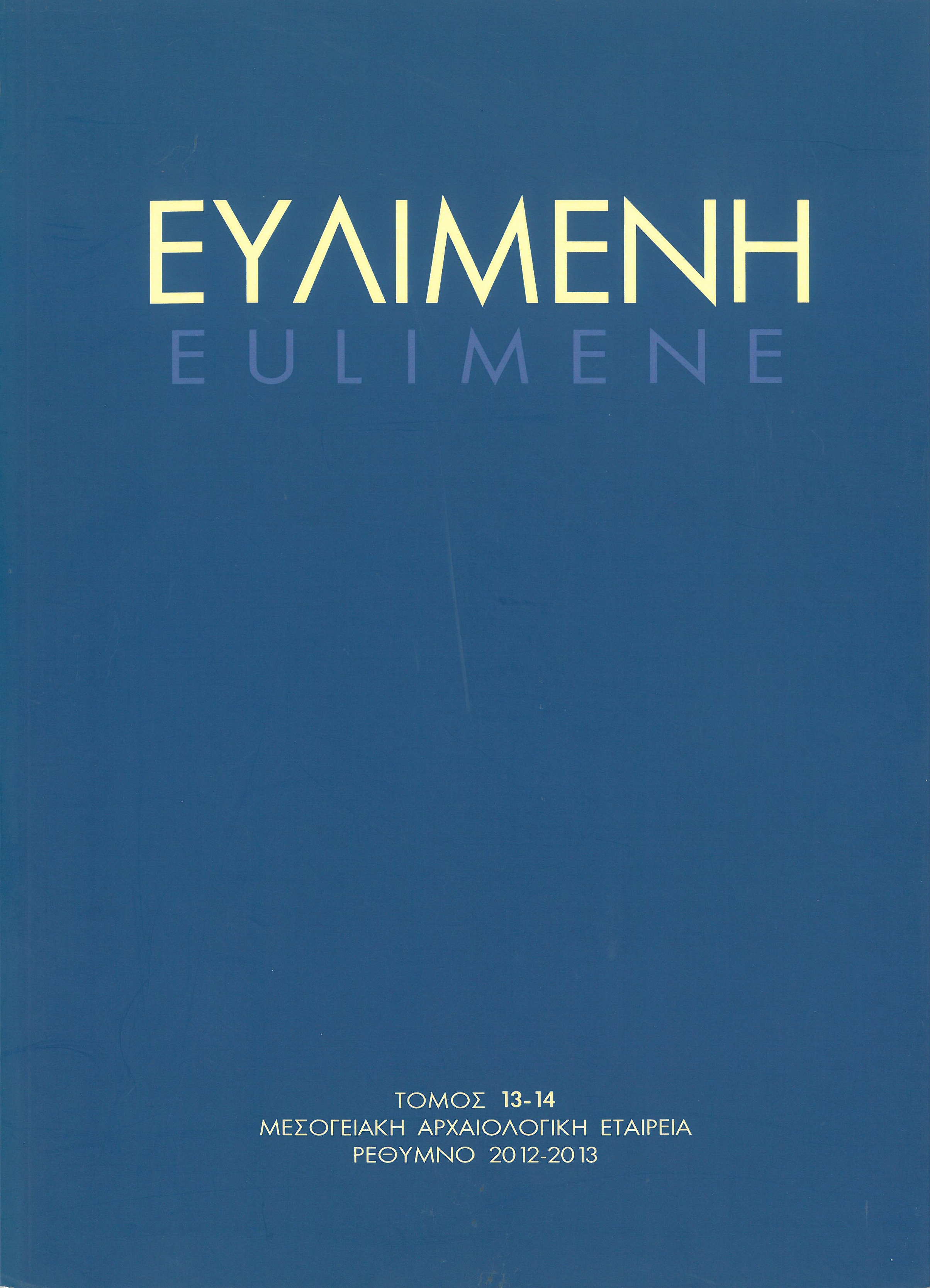Πρωτοβυζαντινά γεωργικά εργαλεία Η μαρτυρία των τεχνέργων από την Ελεύθερνα

Abstract
Strumenti agricoli di età protobizantina. Le testimonianze dall’antica Eleuftherna. Da una casa parzialmente scavata nell’antica Eleuftherna nella Creta centrale proviene un piccolo gruppo di strumenti agricoli, databili con precisione in relazione al sisma del 365 d.C. Per inquadrare questi manufatti in un contesto geografico e cronologico più ampio si è cercato di raccogliere tutte le testimonianze di strumenti analoghi dalla Grecia e dall’Asia Minore, datate tra il IV e la metà del VII sec., enfatizzando il valore dei manufatti archeologici, finora non considerati in modo adeguato dalla ricerca, senza trascurare la capacità informativa, ma anche i limiti, degli altri tipi di documentazione (le fonti scritte e iconografiche, l’etnoarcheologia e l’archeologia sperimentale) per ricostruire la funzione, l’uso e la denominazione di questa classe di materiali. Seguendo questa impostazione, nello studio si è messa in evidenza l’importanza della forma, delle dimensioni e del peso dei manufatti, mostrando che gli strumenti dal contesto chiuso di Eleuftherna erano destinati alla coltivazione dei giardini.
Nonostante ci si sia basati su un campione complessivamente limitato di manufati di età protobizantina, è stato possibile descrivere la diffusione di certi tipi di attrezzi e il numero finora esiguo degli strumenti specializzati, interrogandosi sul conservatorismo delle forme ed evidenziando anche alcuni miglioramenti tecnologici.
Lo studio si conclude con una riflessione sulla produzione e la circolazione delle parti in ferro degli strumenti, mettendo in luce la rete di relazioni tra i fabbri e gli agricoltori.
Agricultural tools of the Proto-byzantine era. The evidence from ancient Eleutherna. From a house partially excavated in ancient Eleutherna in central Crete comes a small group of agricultural tools, datable with precision in relation to the earthquake of 365 AD. In order to place these artifacts in a wider geographical and chronological context, an attempt was made to collect all the evidence of similar instruments from Greece and Asia Minor, dated between the 4th and the middle of the 7th century. Emphasis is placed on the value of the archaeological artifacts, hitherto not adequately studied, without neglecting the information provided by, but also the limits of the other types of evidence (written and iconographic sources, ethnoarcheology and experimental archeology), in order to reconstruct the function, use and the name of this class of materials. Following this approach, the study highlights the importance of the shape, size and weight of the artifacts, showing that the tools from Eleutherna's closed contexts were intended for the cultivation of gardens. Although the research is based on a limited overall sample of artifacts from the Proto-Byzantine age, it is possible to describe the diffusion of certain types of tools and the apparently small number of specialized tools, and to note the conservatism of the shapes while also highlighting some technological improvements. The study ends with a reflection on the production and circulation of the iron parts of the tools, centring on the network of relationships between blacksmiths and farmers.
Editorial Note
Volume 13-14 of Eulimene is devoted to the east sector (I) of the ancient Eleutherna, which was dug systematically by prof. Petros Themelis from 1985 until 2003. In three extensive articles, Petros Themelis, Yorgos Brokalakis and Martha W. Baldwin Bowsky, publish sculptures, tools and inscriptions respectively, unearthed during the excavations conducted during the above period and which date from the Hellenistic period (2nd century BC) to the early byzantine era (mid7th cent. AD).
Many of these artifacts are now exhibited in the newly completed Museum of Ancient Eleutherna, which opened its gates to the public in June 2016.
The publishing directors
Nikos Litinas – Manolis I. Stefanakis
Σημείωμα των εκδοτών
Ο τόμος 13-14 της Ευλιμένης αποτελεί ένα αφιέρωμα στον ανατολικό τομέα Ι της αρχαίας Ελεύθερνας, που ανασκάφτηκε συστηματικά από τον καθηγητή Πέτρο Θέμελη από το 1985 έως το 2003. Στα τρία εκτενή άρθρα που δημοσιεύονται παρουσιάζονται από τον ίδιο τον ανασκαφέα, τον Γιώργο Μπροκαλάκη και την Martha W. Baldwin Bowsky, γλυπτά, εργαλεία και επιγραφές αντίστοιχα, που ήρθαν στο φως κατά τις ανασκαφές των παραπάνω ετών και χρονολογούνται από τους ελληνιστικούς χρόνους (2o αι. π.Χ.) μέχρι και την πρωτοβυζαντινή περίοδο (μέσα 7ου αι. μ.Χ.). Πολλά από αυτά τα αντικείμενα εκτίθενται πλέον στο Μουσείο Αρχαίας Ελεύθερνας, που ιδρύθηκε χάρη στο όραμα και τις προσπάθειες του καθηγητή Ν. Σταμπολίδη και το οποίο εγκαινιάστηκε από τον Πρόεδρο της Ελληνικής Δημοκρατίας στις 19 Ιουνίου 2016.
Οι διευθυντές έκδοσης
Νίκος Λίτινας – Μανόλης Ι. Στεφανάκης
##plugins.themes.ekt-hometheme.article.details##
- Ausgabe
- EULIMENE 13-14 (2012-1013)
- Rubrik
- Articles
- Kategorien
The copyright for articles in this journal is retained by the author(s), with first publication rights granted to the journal. Authors who submit articles to this journal confirm that third-party intellectual property rights are not violated in any way. By virtue of their appearance in this open access journal, articles can be used freely, with proper attribution, for educational and other non-commercial purposes. The Mediterranean Archaeological Society retains the right to publish papers that appear in EULIMENE in any form, including electronic, the journal may assume in the future. It also retains the right to deposit articles published in EULIMENE in its repository.





